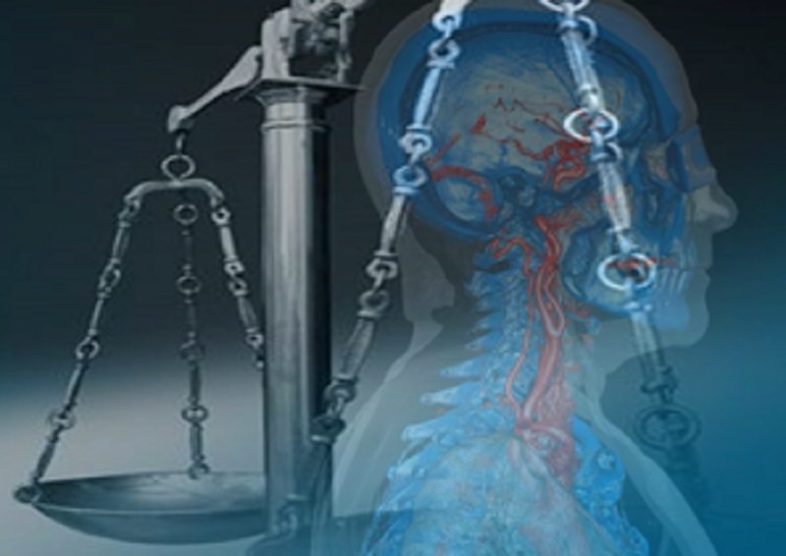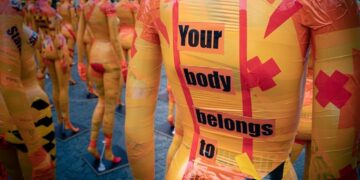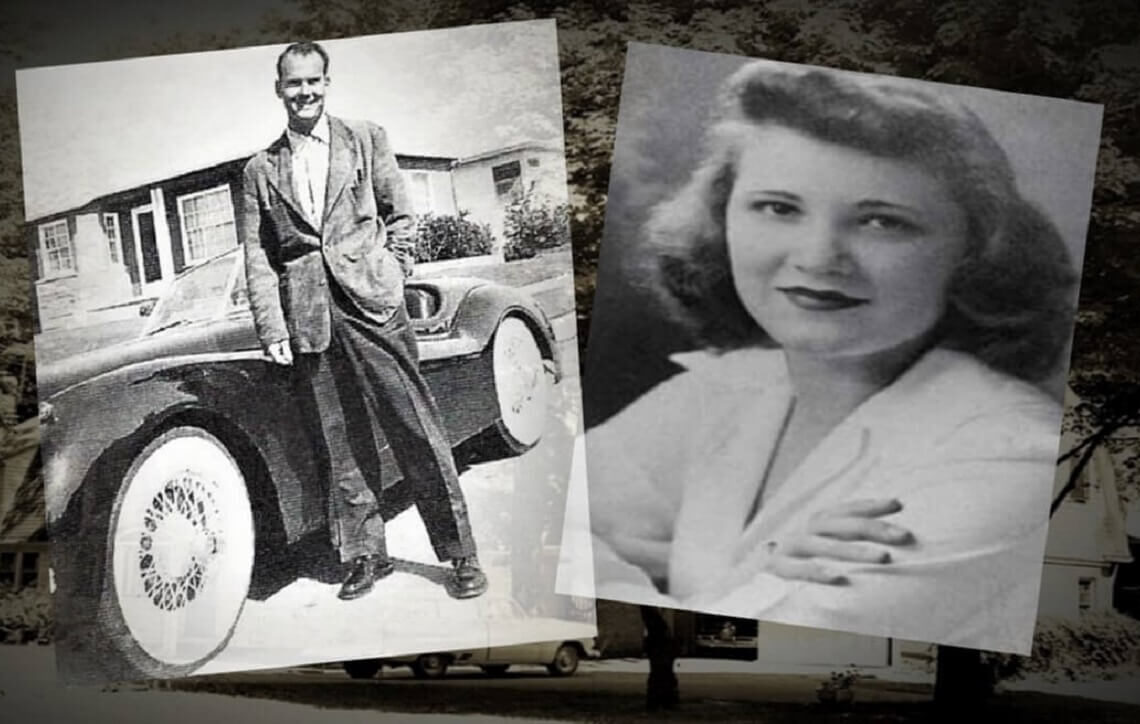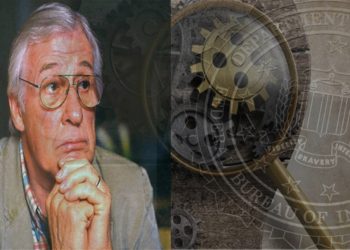Part Two of this fascinating true crime story by Cincinnati true crime author JT Townsend.
Read Part One here.
Reversal of Fortune
As Dr. Sam languished in the Ohio State Penitentiary, the Sheppard investigation began to pick up speed.
Incredibly, Sheppard’s defense lawyers had been denied access to the crime scene to do their own testing. Only after the conviction were they able to examine the physical evidence.
They engaged Dr. Paul Leland Kirk, a forensic scientist and an expert in the emerging field of blood spatter, to analyze the murder room. Kirk’s stunning conclusion – the blood trail, assumed to be Marilyn’s blood dripping from the weapon, was actually the killer’s oxygenated blood oozing from an open wound! And Sam Sheppard had no open wounds,
The spots were Marilyn’s blood type, but Kirk’s new protocol for grouping indicated it was NOT her blood – proving that a third person bled at the murder scene that night.
Sheppard’s lawyer based an unsuccessful appeal on Kirk’s findings, but as the years passed the case that split Ohio was dividing the nation. Was Sam Sheppard a brutal wife killer as the jury believed, or the victim of a cruel legal blunder?
Enter F. Lee Bailey, a young, brash attorney bulging with aspirations. Bailey sprung Sam from prison in 1964 when a US district court judge ruled the 1954 trial violated Sheppard’s rights to due process. In setting aside the conviction, he called the inflammatory trial atmosphere a “mockery of justice,” and ordered prosecutors to charge him again in 60 days or have the case dismissed.

Cleveland wasn’t going to let Sheppard off that easy. After more legal wrangling, the retrial began in October 1966. Interest ran high but media coverage was subdued this time. Neither Sam nor his paramour Susan Hayes took the stand.
Coroner Gerber’s testimony was pivotal in the first trial, but twelve years later Bailey roasted him for calling the missing murder weapon a “surgical instrument” in 1954. Gerber defended himself by saying he had looked “all over the United States” for one.
Delighted, Bailey feigned surprise. “Please tell us what you found.”
Trapped, Gerber sheepishly admitted, “I didn’t find one.”
This exchange insured Sam’s acquittal. When he heard the verdict, Sheppard slammed his hand on the table and shouted “It’s about time!” He later revealed he was carrying a gun and if convicted would brandish it in court so deputies would kill him.
Many in the press called it a “makeup” verdict, and Dr. Sam was never truly exonerated in the public eye. He might be in the clear, but he would never be free. He died four years later at age 46, a hopelessly broken alcoholic claiming his innocence to the very end…
Modern Forensics on Trial
Thirty years after Sam Sheppard’s death, his son Sam Jr. sued the state of Ohio for his father’s wrongful imprisonment.
DNA evidence was pivotal in the civil trial. Analysis of blood at the crime scene seemed to confirm what Dr. Kirk claimed in 1955 – that there was blood from a third person at the crime scene.
Ohio was determined to win the third Sam Sheppard trial. They attacked Kirk’s findings by discrediting him and muddling the key blood evidence. And as the plaintiff, Sheppard’s son was required to prove his father was innocent of the crime. In rejecting the claim for damages, the jury found that Sam Jr’s lawyer had not met that burden of proof.
Even from the grave, the conundrum remained for Dr. Sam. The state could not prove him guilty beyond a reasonable doubt, yet neither could his family prove his innocence. .
So what did the blood evidence from the murder room really show?
When Cleveland detectives first entered the crime scene they did not guard against contamination and bias. The scene was hopelessly compromised by neighbors and reporters wandering through, and other avenues of inquiry were ignored when they locked in on Sheppard as their prime suspect.

Dr. Kirk’s first principle of forensics states that “Every contact leaves a trace…the killer always leaves something at the scene and takes something from the scene with him.” Scrutinizing the crime scene and the autopsy after Sam was convicted, Kirk pronounced some startling conclusions:
- The killer’s body intercepted flying blood and left an unstained outline on the closet door. Sam only had a small blood stain on his pants.
- Marilyn’s two broken teeth occurred when she bit the killer and he wrenched his hand away. Sam had no bite marks on his hand.
- The blood trail from the bedroom was consistent with oxygenated blood dripping from an open wound. Sam had no open wounds.
- The presence of unidentified sperm in Marilyn suggested she had been raped. Domestic homicides rarely involve sexual assault.
So did a third person bleed in the house that night and rape Marilyn?
Prime Suspects
Today the Sheppard narrative has vanished inside a wild tangle of plot twists, shadowy suspects, and contentious forensics. Can we cut through this quagmire and name our killer?
In July 1957, a Florida convict confessed to killing Marilyn Sheppard. Donald Wedler spun a detailed, hazy story of a drug-fueled burglary that turned into murder. Wedler was a 23-year-old drifter and petty criminal who happened to be in downtown Cleveland the night of July 3rd, 1954. After shooting heroin with some other itinerants, he hitched a ride to the suburbs and went looking for a house to rob. He entered a house on the lake, one that from his description seemed to match the Sheppard home.
Sheppard case specifics kept popping up. Wedler said he passed a man sleeping on a couch and entered a bedroom with a sleeping woman. When the woman woke up he struck her “several times” with a 9” flanged pipe that he carried. As he heard the man coming up the stairs Wedler struck him with the pipe and knocked him out.

Witnesses placed him in Cleveland that night, and Wedler fit the description of a tall, bushy haired man. Yet Wedler claimed he only struck the woman a few times and didn’t mention pulling her pajamas down, stealing jewelry, smashing trophies, or fighting Sam on the beach.
Wedler volunteered to take a polygraph in Florida, but Coroner Gerber was convinced his confession was false and blocked it. Gerber also objected to a proposed polygraph for Sam Sheppard, and the small crack in the case quickly closed up again.
Had Donald Wedler killed Marilyn Sheppard, or just imagined that he had?
Lester Hoversten
The forgotten man of the Sheppard case was their houseguest.
Dr. Lester Hoversten, longtime friend and colleague of Dr. Sam, arrived at the Sheppard house two days before the murder and stayed there the night before. His visit to Cleveland seeking employment had not gone well, and it was a depressed, pathetic Hoversten who landed right in the middle of a sensational murder investigation.
He’d met Sam in medical school and they became bachelor friends who often double dated. Hoversten was 13 years older than Sam, an “odd duck” who had problems with women. After his marriage Sam tried to distance himself from Lester, mostly because Marilyn didn’t like him.
The feeling was mutual, because Hoversten concealed a fantasy that he and Sam could recapture the glory of their single life if Marilyn was gone. He’d encouraged Sam to divorce Marilyn when their sexual problems arose after her first pregnancy. And at trial Hoversten testified for the prosecution about Sam’s infidelities and falsely claimed that he was considering divorcing Marilyn.
That Hoversten was an emotional powder keg with animosity toward Marilyn didn’t concern investigators who’d already targeted Sam Sheppard. Hoversten did have a good alibi, as several friends placed him in Kent, Ohio on the murder night, putting him 50 miles away from the scene of the crime.

Whether he was a viable suspect or just a weird coincidence, Lester Hoversten took whatever secrets he had to the grave…
Spencer and Evelyn Houk
Sam’s frantic call to his neighbors early that morning implied two intruders were in the house: “Spen, I think they’ve killed Marilyn!”
Spen was Spencer Houk, the mayor of Bay Villlage, who with his wife Evelyn lived three doors down from the Sheppard’s and often socialized with them.
Rumors surfaced early in the investigation that Spencer Houk was sexually involved with Marilyn. It seemed unlikely – Houk was 12 years older, a dumpy, droopy faced man with a limp. Yet tales of his philandering followed him around Bay Village, and his car was often seen parked in the Sheppard driveway when Sam was at work.
Spen’s wife Evelyn was a bony, hawk-faced woman with reason to be jealous of younger, prettier Marilyn Sheppard. And recently, the Sheppard’s had pulled away from socializing with the older couple.

Lee Bailey had pointed the finger at the Houks during Sam’s 1966 retrial, alleging their demeanor showed consciousness of guilt when they arrived after Sam’s frantic call. Plus Sam always maintained that he was struck from behind when he saw the “white form” bending over Marilyn. And the blows cracked Marilyn’s skull but not the dura, perhaps indicating lack of strength by a female killer.
In this scenario, Spencer slipped out to visit Marilyn when he saw the light on in Sam’s study – a signal from Marilyn that he was out on a house call. A jealous Evelyn followed her husband and confronted them in the bedroom. In a rage, Evelyn beat Marilyn and Spen knocked Sam out to protect his wife.
Yet Houk didn’t fit the description of the man Sam grappled with, and surely Sam would recognize his good friend even in the darkness.
The Houks would eventually divorce, yet were shadowed by a cloud of suspicion for the rest of their lives over their connection to Ohio’s most notorious murder case…
Sam Sheppard
Sam Sheppard quickly became the prime suspect in what appeared at first to be a domestic homicide.
He told a bizarre, confusing story about a “bushy haired” intruder who managed to knock him out twice. It didn’t help when his brothers whisked him away to their clinic and wouldn’t let any other doctor examine his injuries.

Sheppard was not a faithful husband, and he certainly had the means and opportunity to kill his wife. But after spending a cozy evening with another couple watching television, what would cause him to fly into a rage and try to crush Marilyn’s skull?
The prosecution theorized that Sam’s infidelity pushed Marilyn into her own tryst, and on that night she told Sam the baby she was carrying was not his. He killed her in the heat of the moment, and the jury bought that scenario, convicting him of only second degree murder.
Yet even after countless interviews Sam never changed a single detail of his wild story, and the physical evidence supports it. Sam had sustained a serious neck injury that could not be faked, and the blood trail could not be linked to him. The killer would have been blood spattered, yet Sam was almost spotless. And would a doctor with no history of spousal abuse savagely beat his wife to death with his 7-year-old son asleep in the next room?
There was no physical evidence in 1954 that confirmed Sam Sheppard killed his wife. And 66 years later conclusive proof is still missing…
Richard Eberling
Cold case detectives know that every good mystery has a wild card. With Sheppard, consider it dealt by Richard Eberling. It’s like a fictional plot twist – a future serial killer just happens to be the victim’s window washer.
Richard Eberling was thorny, dysfunctional creature skulking under the radar. He was a tall, balding man known to wear bushy wigs, which tallied with Sam’s description of his assailant and also matched a stranger seen near the Sheppard house that night. Astoundingly, Eberling was never interviewed during the original investigation.
His connection to the murder didn’t surface until 1959, when he was arrested for stealing from his clients. A search of his house turned up a stash of plundered items, including Marilyn’s two rings which went missing from Sam’s brother’s house, where Eberling also worked, sometime after the trial.

During questioning about his larcenous exploits, Richard Eberling dropped the proverbial bombshell – he volunteered that he had dripped blood in the Sheppard home two days before the murder! And as the interrogation intensified, Eberling changed his story about where he cut his hand and where the blood was dripped.
He agreed to take a polygraph test and passed it, but decades later other analysts deemed the results either inconclusive or that he “showed deception” when denying the murder of Marilyn Sheppard. Richard Eberling would go on to leave a trail of dead women in his wake.
In 1956 Barbara Ann Kinzel was killed in a one car accident in which Eberling, the driver, was not injured. In a significant coincidence, she’d been a nurse at Bay View Hospital when an injured Sam Sheppard was brought in on the morning his wife was murdered.
In 1962 Myrtle Irene Fay was beaten to death on her bed in her Cleveland apartment, in an almost identical crime to Marilyn Sheppard’s murder. Myrtle’s sister was Ethel Durkin, a wealthy widow who employed Eberling as her caretaker. Myrtle was killed just days after she warned Ethel that Eberling was stealing money from her – yet the crime remains unsolved to this day.
In 1970, Sarah Belle Farrow, Ethel’s other sister, died in a fall at the Durkin home in what was ruled an accident. Like Myrtle, Sarah distrusted Eberling and tried to get Ethel to fire him. But suspicions never landed on Eberling.
That all changed when Ethel Durkin suffered a terrible fall at her home in November 1983 while Eberling was with her. She died six weeks later, and her death was ruled accidental. But in 1988 Eberling was charged with forgery and aggravated grand theft when it was discovered that Durkin’s will leaving her estate to him was a forgery. Soon after that Durkin’s body was exhumed, and the cause of death was changed to homicide.

Eberling and his partner Obie Henderson were convicted of Ethel Durkin’s murder. He died in prison in 1998, but not before conveying an endless string of cryptic, incriminating statements about the murder of Marilyn Sheppard…
The Explanation
Richard Eberling is the most probable killer of Marilyn Sheppard. Eberling was a liar and a thief convicted of over 40 burglaries from clients. Marilyn probably caught him red-handed when he was cleaning their windows two days before the murder. When she threatens to expose him motive rears its ugly head – Eberling is money hungry and very protective of his business. He also harbors a sexual attraction for Marilyn. Killing her removes a threat and satisfies a lust.
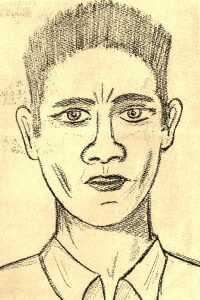
Eberling parks his car at the nearby lakeside park – a car similar to his blue station wagon was seen there that night. And two witnesses driving on Lake Road saw a tall, bushy haired man near the Sheppard house.
As their window washer, he is familiar with the unlocked house and grounds. The Sheppard dog recognizes him and does not bark. Entering through the side door, he does not see Sam asleep on the couch.
Marilyn fights back as he pulls her pajamas down. When she bites him, Eberling explodes and batters her relentlessly. He knocks out a bleary Sam and drips blood through the house while looking for valuables to steal.
Richard Eberling was a convicted murderer suspected in the death of four other women. Throughout his life he made enigmatic comments about Marilyn’s murder, and even confessed that HE killed her to several of his partners in an insurance fraud scheme.

Here’s the final glimmer of his guilt. The killer tried to steal Marilyn’s rings on the murder night, rings that were eventually pilfered from her personal effects kept at Sam’s brother’s house. When Eberling’s house was searched in 1959 they found Marilyn’s rings placed in a special box, kept separate from his other stolen goods. Detectives would later say it looked like a shrine…

Epilogue
Sam Sheppard may be the only man in history to be convicted, acquitted, and “convicted” again of the same murder, a legal saga that took 46 years to play out. Yet, lost to time and remembrance is the beautiful Marilyn Reece Sheppard. She was the classic 1950s housewife whose life mirrored the fortunes and failures of her husband. She persevered through a troubled marriage to a lothario doctor, because that’s what women did then.
We can’t reach beyond this two dimensional image, and can only guess at her deepest thoughts. Marilyn becomes a plaintive ghost, staring back at us from fading black and white images. I see the memory of her radiance and feel her slaughtered dreams. But she is still beyond my reach…
About The Author
JT Townsend is a freelance writer, self-described armchair detective, true crime author and lifelong resident of Cincinnati. This article was originally published on his website jttownsend.com available here. To read more from JT, check out his Facebook Page at facebook.com/TrueCrimeDetective and his books available on Amazon.











